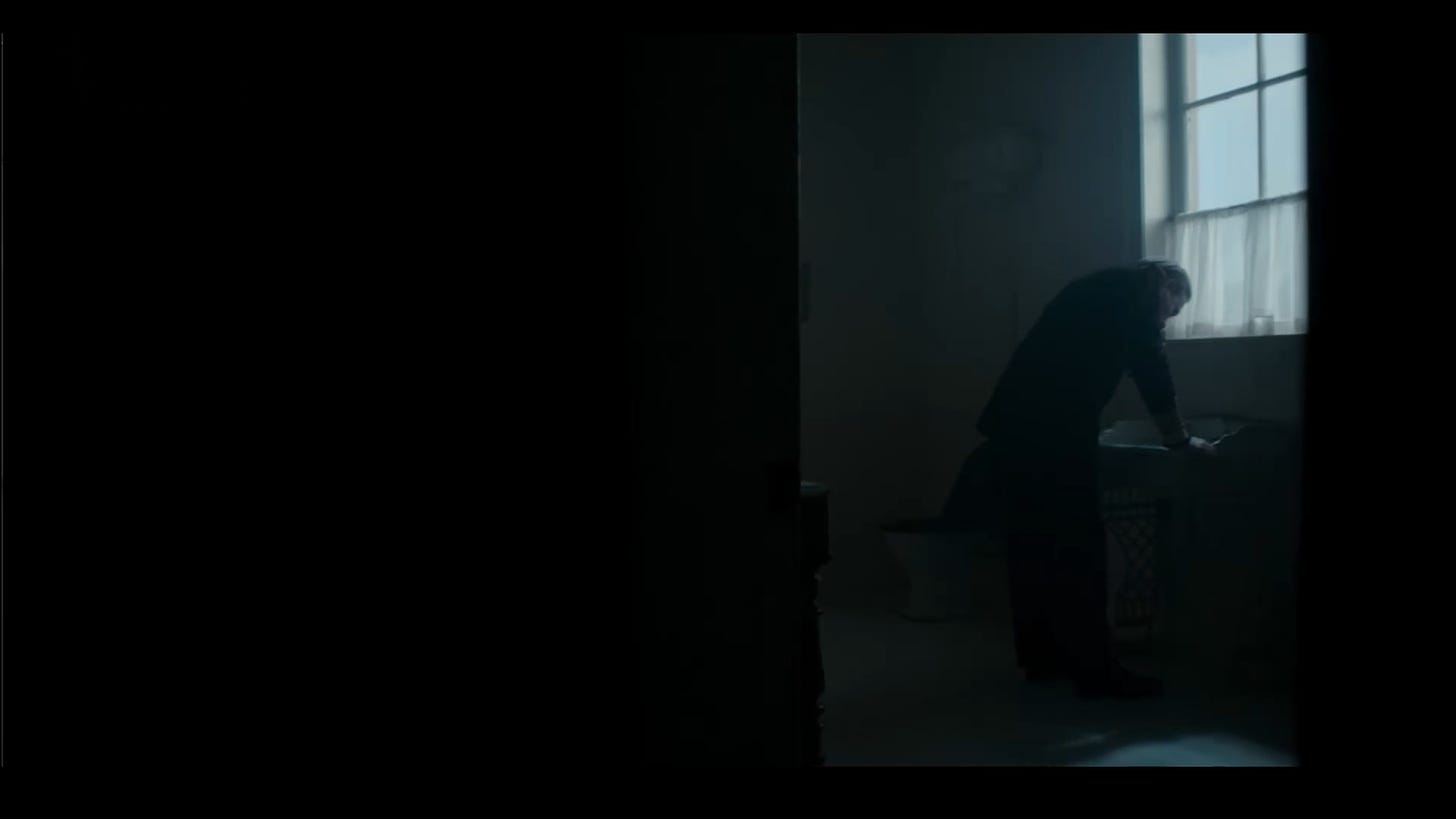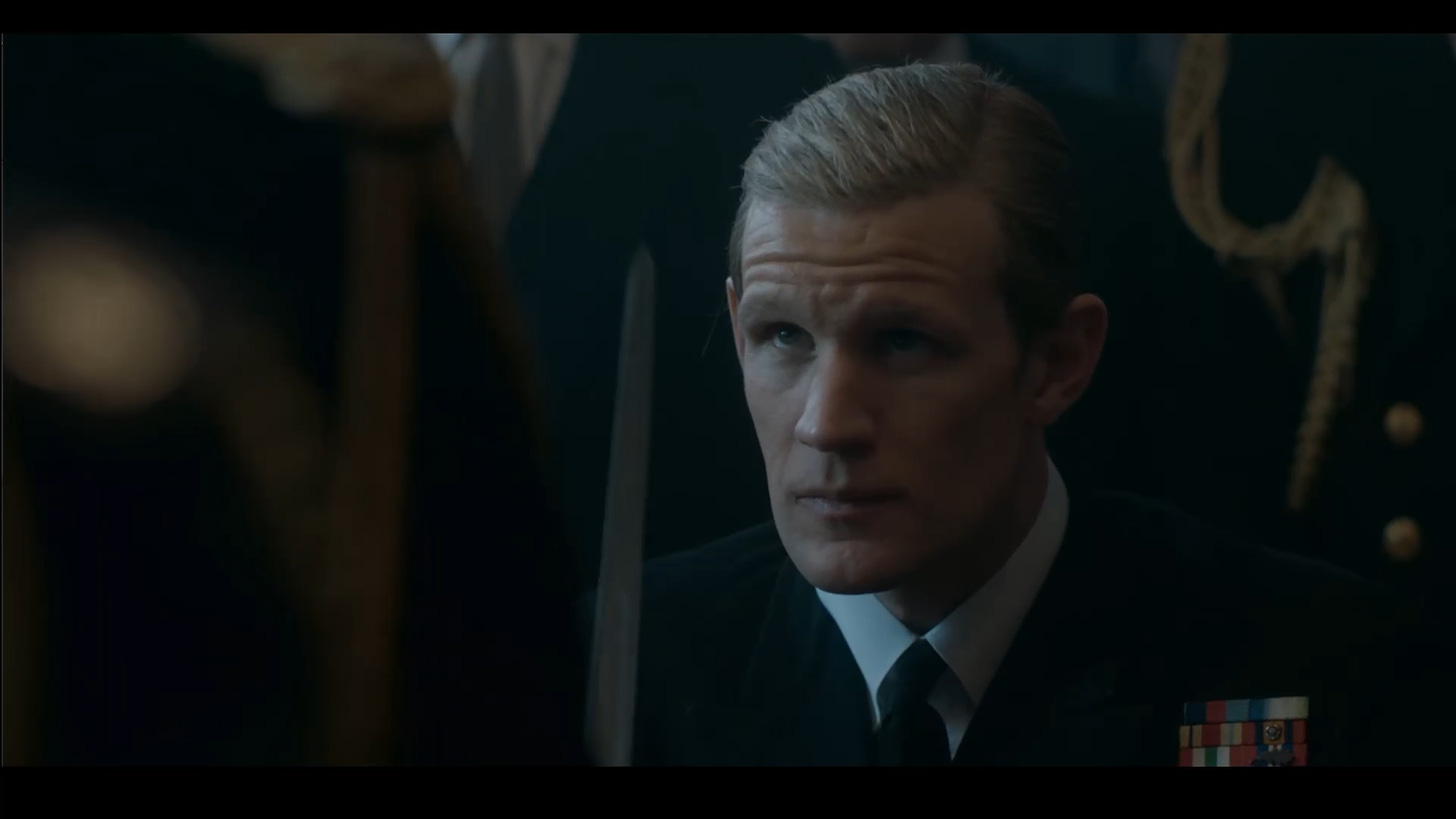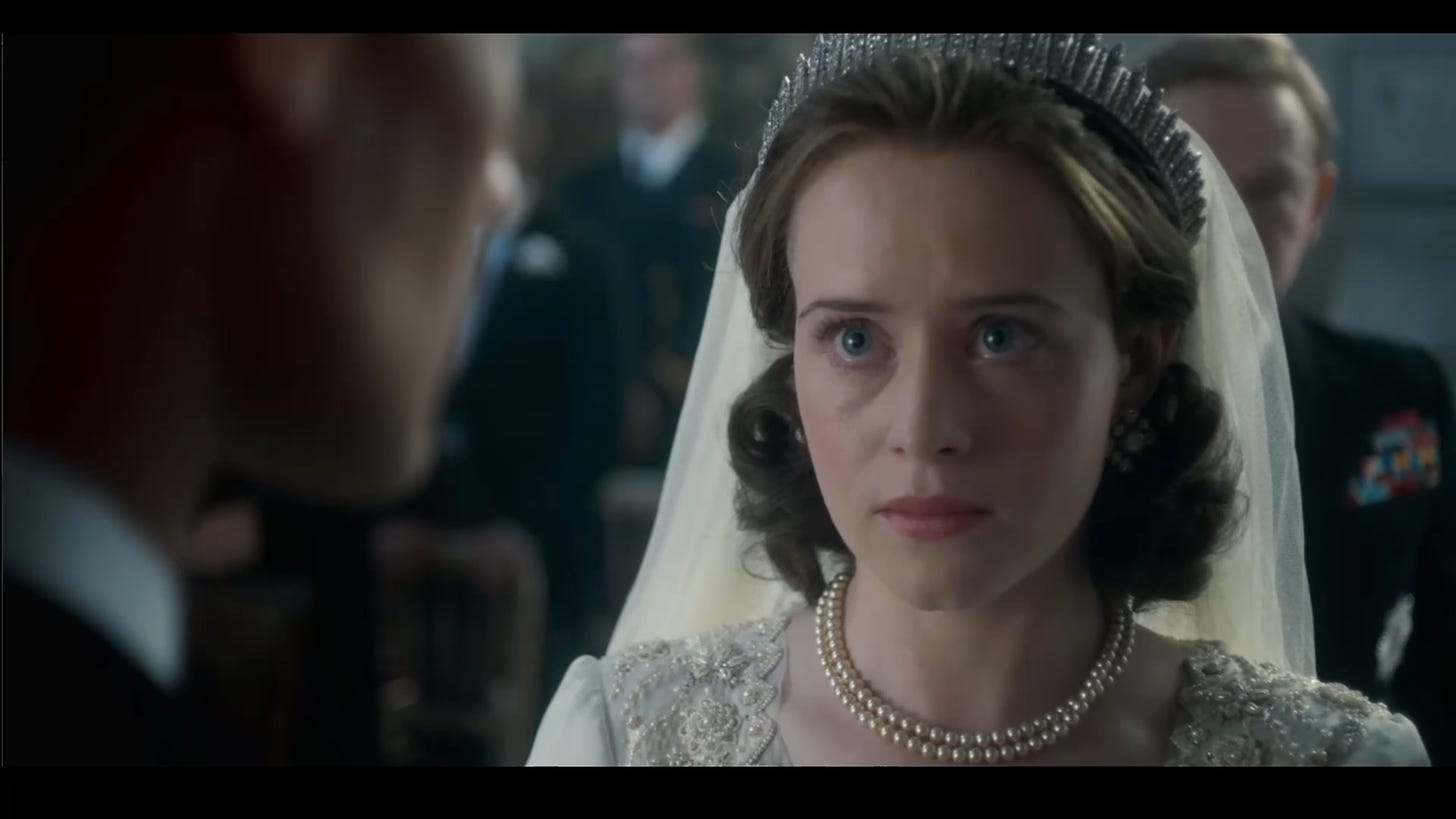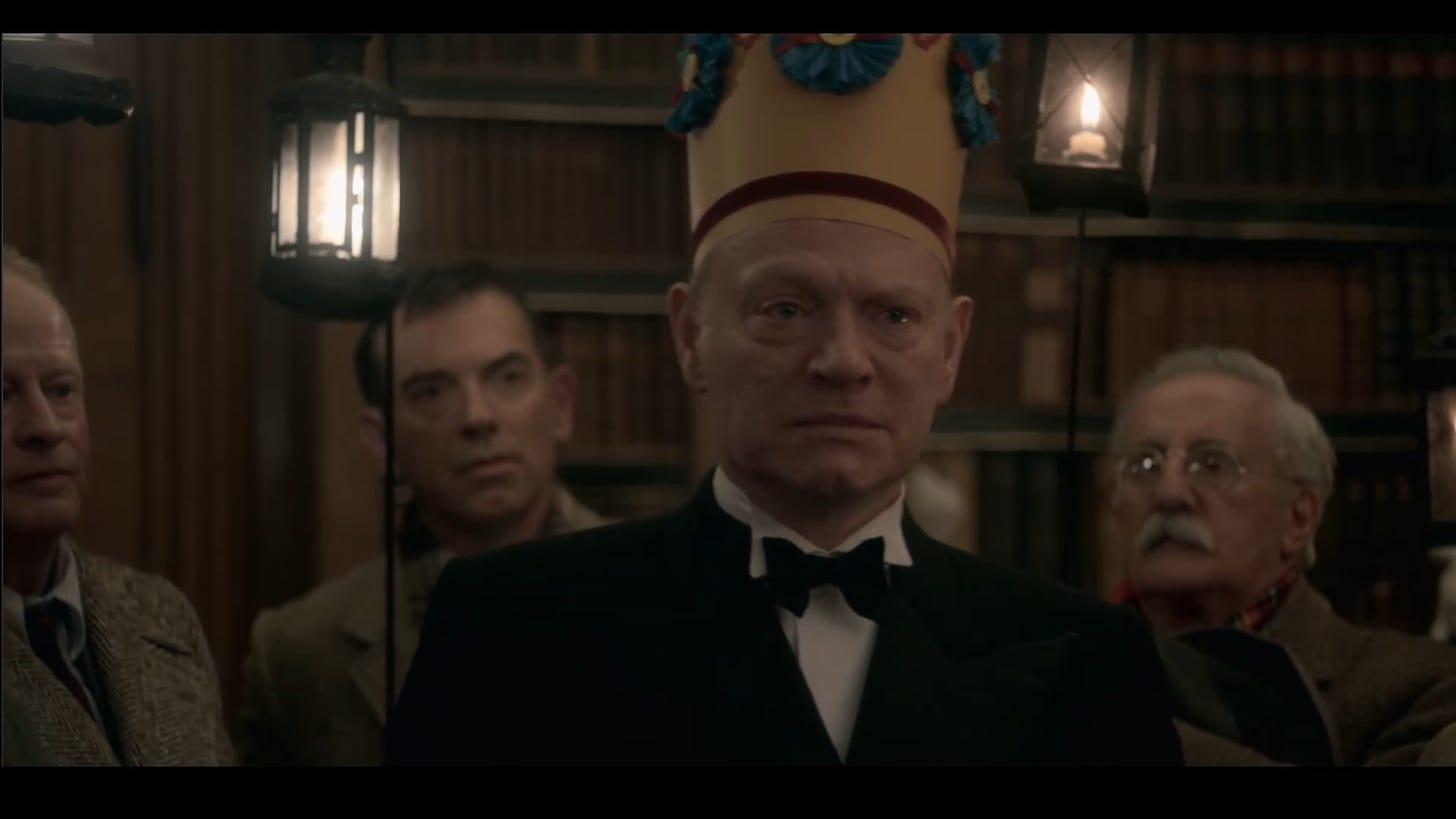One of the absolute best things a filmmaker can do is add specific subtle moments into their films. There's certainly nothing innately wrong with the big flashy moments, but the gravitas of subtly is way too often overlooked.
Let's look at 6 specific filmmaking techniques you can learn from the pilot episode of The Crown.
(Quick PSA that I’m also trying out the video version for this post. Feel free to watch with the above player, and let me know if this is a format I should continue with!)
TECHNIQUE 1:
I remember watching the first few shots of The Crown and thinking: "That's an interesting way to show the royal family. Coughing up blood. Probably one of the least regal and royal things one can do, yet here we are.”
Nothing is said by King George about this in this moment (that comes later), but we as the audience instantly understand that the king is sick. Very, very sick. This coughing fit not only opens the entire series, but more importantly it sets up the entire episode of King George planning for the transition his daughter Elizabeth taking the crown, and it does so with nothing more than Jared Harris hacking and coughing.
It's a perfect example of show vs. tell. We're instantly worried about the king, and having the benefit of modern medicine, we become "in the know" when the king is told that he's coughing up blood "probably because of the cold."
The filmmakers do something sneaky here by letting us, the audience, subtly be part of the secret, as the writers rightly assume that most viewers know that coughing up blood is usually extremely serious. So when the coughing fit and blood are brushed off, we have an instant connection to the King because we understand. We're now part of his team at an emotional level that the other characters are not, at least until midway through the episode.
The filmmakers have done their part by making us care about King George.
Contrary to some popular screenwriting notions out there, characters don't need to do a darn "nice" or "good" thing to make the audience like them. What you want to do is make your audience empathetic with the characters - make them understand when no one else does. Then the audience feels like they a special connection that makes them want to keep watching.
TECHNIQUE 2:
Moving on through the opening sequence, Phillip renounces his former titles as he prepares to wed the future Queen Elizabeth. This is another bit of foreshadowing, since as the show goes on, we see Phillip as someone who is frustrated that he cannot have his own life or his own career, and this scene sets-up and foreshadows the struggle that Phillip will face in his life.
It's vitally important that the first time we see Phillip it is in this pivotal moment where he effectively swears to give up any vestiges of who he is.
So, between the king coughing up blood and Phillip renouncing his titles we have 1) the re-setting of expectations, aka instantly telling the audience that this will not be quite the royal story that you expect, and 2) the foreshadowing of the king's demise and Phillip's struggle.
Two pivotal story beats have been prepared for the audience right in the opening sequence at the bargain price of only a few minutes. This, my friend, is economical filmmaking at its finest.
TECHNIQUE 3:
Next, we have a brilliant Mini-Character Arc. Never underestimate the time the power of facial expressions done well. During the wedding scene, as Elizabeth is saying her vows, there is an extremely awkward bit where Elizabeth won't even look at Phillip as she's speaking, but then slowly, as the vows progress, she forces herself to look at her almost-husband and we can see the "I don't know if this is the right decision" morph into acceptance, and maybe even some love.
Contained within this scene we have a mini-character arc through facial expressions and acting alone. It's all in how actress Claire Foy played the part, as the lines of dialogue would have been the same no matter who was cast in the role, but it's in the looks Claire Foy gives or doesn't give, the faltering of the voice or the confidence in the voice, that once again tells us so much through showing alone. It’s not in the words speaking, but in how Claire Foy delivers the scene that makes all the difference and communicates so much about her character to us.
We're going to return to the art of show vs. tell momentarily, but first! A quick PSA for Pacing: When done well, pacing gives the story time to breathe and the audience time to think, reflect, and consider.
Now I'm definitely not advocating for slow character dramas all the time. Mad Max: Fury Road is an incredible example of a film that is unrelenting with pacing where you can barely breathe, but yet it still works (but that’s a movie for another time).
That said, I'm seeing a trend amongst films these days where we move from scene to scene to scene, etc., etc., etc. without giving the audience any time to process through techniques like establishing shots or lingering facial expressions. There's a time and a place for everything, but don't underestimate the power of pacing and letting the audience have even a few seconds to breathe here and there.
Certainly still make it interesting by the clever use of shots or music, for example, but it is always vital to take a step back and evaluate your film from a hard, objective perspective, and ask yourself, “Where does the audience need a few seconds to process everything that is going on?”, and then build that into the edit.
Let’s talk more about Incorporating Subtleness and Subtext: The Art of Show vs. Tell.
TECHNIQUE 4:
There are a few things here: First, we have the absolute anguish of watching the king rely on the very thing that is killing him, and not only that, but he's using it as an emotional crutch. Every time the king is stressed or gets some bad news, particularly about his health, what does he do? He lights up a cigarette!
Again, we as the audience have the benefit of knowing that this is absolutely killing him, but in the 1940's, this was not common knowledge, so it becomes emotionally stressful from the audience perspective as we watch him literally killing himself, and yet he has no idea.
The tension in these scenes if off the charts, partially due to how Jared Harris plays the scenes as he realizes his impending mortality, but mostly due to the acting and directing choice of: "Let's light up every time the king is emotionally disturbed."
Now, we no longer only feel from the king, that empathy turns into agony as we know something vital that the king does not, and sadly never will.
TECHNIQUE 5:
Carrying this thread, we actually glimpse the doctors remove one of the king's lungs. This is not referenced by name for many, many scenes, but we're given just enough information to know that this is extremely serious. We see the lung come out, then it's contrasted with the doctor saying "The procedure went well," coupled with the slight change to concern in the doctor's face and a quick rack focus to Phillip noticing this and HE becoming concerned. We know the things are most definitely not ok, but again the gravity of this is not explained until much, much later when the doctor finally tells the king the truth.
The king never says "oh woah is me" or anything remotely akin to that. Rather, we see him encounter his mortality during the scene where he is singing with the common folk and beings crying.
He knows his time is near an end, and that this is likely one of the final times he will have with the common people who love him so much. And we KNOW they love him as after the wedding scene, we hear the people chanting un-relentlessly "WE WANT THE KING! WE WANT THE KING!"
Nowhere is it explained how much the people love the king. Nowhere does King George explain that he is distraught. These things are dramatized through the actions of the characters, which is almost always how information should be provided to the audience. Once again: show, not tell.
Then there's The Scene Weave.
TECHNIQUE 6:
In storytelling, particularly in movies and TV, we want to be as economic in our scenes as possible and make the various plot threads weave together and connect. We want the character’s journeys to be related to each other in a way that seems natural, not forced. For example, consider this sequence where each scene plays into the following one:
The King wakes up post-operation and asks, "Who won the election?" We learn that Winston Churchill has once again been elected Prime Minster.
In the next scene, Churchill is reading a cryptic report about the king's operation where he knows that facts are being hidden.
Next, we cut back to the king as he is getting ready, and learn that he's using makeup to hide his sickness and ailments.
Then the King and Churchill meet and discuss sending Elizabeth on the world-tour in-lieu of the King going himself, due to his sickness.
Cut to Churchill and his wife discussing the King's health, as well as discussing the Princess Elizabeth, with their conversation implying her inexperience.
Finally, we conclude with Elizabeth and her family overseeing house repairs and decorating - an activity that is quite un-royal when one considers that she is next in line to the throne. Also, of course, implying her inexperience in the matters of government.
Six scenes that taken by themselves have little to do with each other, except for the bits of plot threads that carry one scene into another into another, making each scene feel like it belongs and is part of a greater whole.
This technique can't always be used, but whenever possible, it is an absolutely fantastic way to keep the audience engaged, the plot genuine, and the story moving naturally.
Thanks so much for joining me on this deep dive! Let me know if you would like to delve into other episodes of The Crown!








Filmmaking 101 #7: The Secrets to Writing a Perfect Pilot (THE CROWN - S1E1)